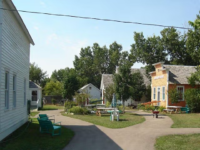Federal, provincial infrastructure funding announced
By Lethbridge Herald on October 1, 2020.
 Officials and dignitaries spell out Iikaisskini, the name of an Indigenous students gathering place, one of four new southern Alberta post-secondary infrastructure and cultural projects included in a funding announcement Thursday at the University of Lethbridge. Herald photo by Ian Martens @IMartensHerald
Officials and dignitaries spell out Iikaisskini, the name of an Indigenous students gathering place, one of four new southern Alberta post-secondary infrastructure and cultural projects included in a funding announcement Thursday at the University of Lethbridge. Herald photo by Ian Martens @IMartensHeraldTim Kalinowski
Lethbridge Herald
tkalinowski@lethbridgeherald.com
The federal and provincial governments announced more than $22 million in public money on Thursday for four new post-secondary infrastructure and cultural projects for southern Alberta focused on Indigenous education and multicultural inclusion.
Provincial Infrastructure Minister Prasad Panda and federal Minister of Rural Economic Development Maryam Monsef made the announcements at the University of Lethbridge. Panda attended in person and Monsef appeared via Zoom.
These grants will be matched by other sources of funding for a total of about $53 million in direct infrastructure investment which is expected to create over 300 jobs.
The lion’s share of the $21.9 million in public dollars announced Thursday will come from the federal government. Of that $20 million is designated toward a rebuild of Red Crow College main campus building in Cardston County which burned down in 2015. Another $28 million will come from Red Crow College itself from other funding sources to pay for the balance of the rebuild.
The Red Crow College project will officially break ground next week, according to Panda.
Medicine Hat College will receive $1.56 million in federal money for the expansion of its inclusion centre, which will have a new Indigenous space component to it. Another $2.34 million will come from municipal and other sources of money for the project.
The University of Lethbridge will receive $184,000 from the federal government to relocate and expand its current Indigenous gathering space in the centre of campus.
The other $276,000 will come from private contributions.
The province contributed direct funding of $125,000 toward a French language cultural centre project in Calgary. The province also chose the four projects which received federal money at this time.
Panda said his government’s criteria for choosing these projects were they were shovel-ready, could get underway the next construction season to help create local jobs, as well as creating long-lasting impact for the communities where they were being built.
“The provincial government prioritized the projects based on the value, and the impact, of those projects,” he said. “This is very important for our Indigenous community that they have an opportunity to gather together.”
Minister Monsef said her government was pleased to make this significant investment to help with Indigenous education and other inclusion initiatives in southern Alberta.
“These are projects these communities have been putting together for years,” she said. “We support these projects because they support the community.”
As mentioned, the U of L will use the funds it received to expand and relocate its Iikaisskini Gathering Place to University Hall in order to create a new central hub to support Indigenous students on campus and provide greater opportunities for cultural outreach with other members of the university community.
U of L president Mike Mahon said the university was thrilled to finally move ahead on this project after years of planning.
“We’re very excited,” he confirmed. “We created the current Iikaisskini Gathering Space in 2014. We put it in a temporary space up close to our residences. But we always wanted this space to be more central to the middle of campus so it would be both accessible to all of our students, faculty and staff, but also so symbolically it would be seen as centrally important to the university.”
Iikaisskini translates as “Low Horn” from Blackfoot. It is the Blackfoot name of Leroy Little Bear, who helped start the first Native American Studies program at the U of L over 40 years ago. Little Bear was thrilled to see that legacy live on as the new central space is opened to all students, Indigenous and non-Indigenous, in the years to come.
“It’s a great honour,” he said, “and it is really an honour to be given a name from one of my ancestors and to be able to carry forward that legacy that this name has. To carry that legacy forward into the future. Iikaisskini means Low Horn, and it is named after the buffalo. If you can picture the buffalo if they are going to attack, when they lower their heads with their horns, that is what Low Horn, Iikaisskini, is about.”
Follow @TimKalHerald on Twitter
-1




